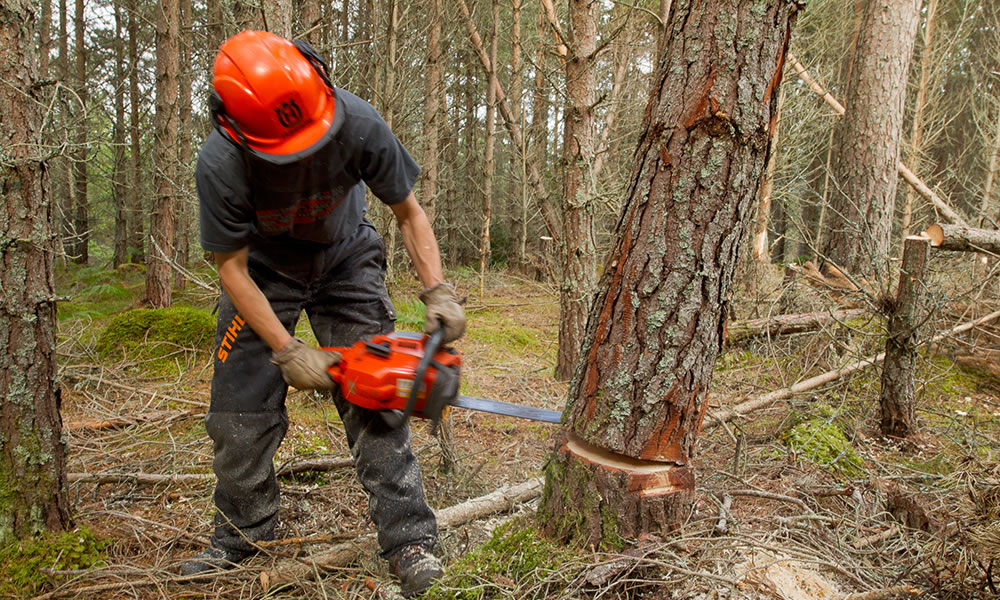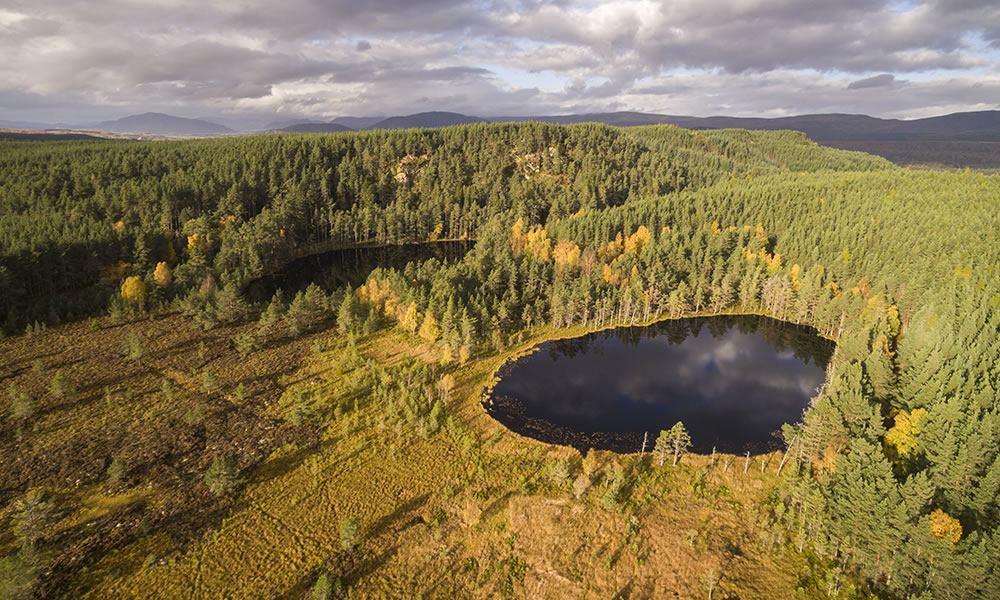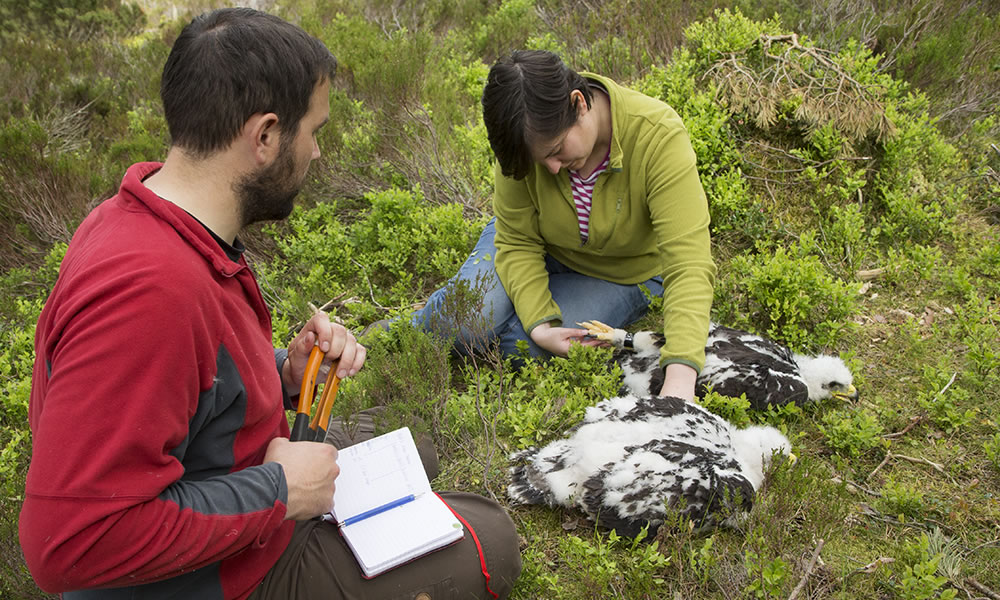Restoring watercourses and floodplains to a more natural state, by…
- Removing modifications to drainage, such as ditches, channels, flood-banks and obstructions, that prevent natural processes - wherever practicable.
- Allowing the accumulation of woody material in watercourses.
- Allowing water to flood naturally over areas of land within the project area, where this does not adversely affect other properties or livelihoods.
Enhancing native woodlands, by…
- Managing herbivore impacts (domestic livestock and native deer populations), to allow recovery of the heather & blaeberry (bilberry) field layer.
- Eradication of non-native trees and shrubs where these risk dominating native woodlands. These may be mature non-native trees, or young trees arising from wind-blown seed in our native woods.
- Enrichment planting of tree species that have been lost from our native woods - mainly because of high levels of grazing - that will struggle to recolonise without our help.
Restructuring Scots pine plantations, by…
- Thinning unnaturally dense plantation pine forests - by felling and pulling over trees - partly to produce timber, but also to produce a lot of standing & fallen deadwood for wildlife, and to improve the light on the forest floor - benefitting a range of wildlife from invertebrates and forest plants to capercaillie and young trees.
- Diversifying plantations by retaining more deformed and open-crowned trees, and creating space around birch, rowan, juniper and other species that have survived in the dense forest.
- Mimicking ‘storm tracks’, by pulling over large patches in the plantation, to create tangles of deadwood for wildlife.
Restoring bog woodlands, by…
- Felling non-native conifers that have been planted on drained bogs.
- Blocking ditches to reinstate the water-table, enabling recovery of bog vegetation.
- These bog pools are vitally important for a range of dragonfly and damselfly species.
Restoring blanket bogs, by…
- Using diggers to re-profile eroded peat bog channels, and using granite boulders to block slow water flow, allowing peat sediment to build up again.
- Using turf plus heather-and-moss ‘bales’ to re-establish plants on the bog surface, making it secure against further erosion.
- Controlling red deer, to reduce grazing impacts, and to enable natural recovery of bog plants, which then bind the peat together.
Managing deer populations to enable recovery of damaged habitats, by…
- Achieving a co-ordinated, collaborative deer control programme, across the partnership area.
- Constant monitoring of deer numbers and their impacts to inform decisions about deer control.
- Managing deer numbers to a level at which regenerating young trees and planted trees will overwhelm the remaining grazing pressure.
Expanding native woodlands to their natural limit, by…
- Reducing deer numbers to allow natural regeneration from existing seed sources.
- Using grazing to create suitable seed-beds that will accelerate natural regeneration.
- Planting tree species that have been lost from our forest edge - mainly because of high levels of grazing - and will struggle to recolonise without our help.
Restoring high altitude woodlands and montane scrub, by…
- Collecting seed and cuttings from remnant populations in the Cairngorms Connect area, and propagating these to build sufficient planting stock to supplement the remaining fragments in mountain habitats.
- Some of this is done in our own Cairngorms Connect tree nursery.
- We will plant out new montane woodland seed sources at a scale that will overwhelm high-altitude grazing pressure from deer and mountain hares.
Building understanding & awareness by…
- Providing information about these amazing places and our aims for improving them, in an engaging way.
- Building awareness about the benefits we all derive from our forest, hills, bogs, mountains - and the wildlife that lives in this amazing range of habitats.
- Building the project profile locally, nationally and internationally.
- Creating opportunities to get involved - through learning, through volunteering, and through working within the Cairngorms Connect partnership project.
Using good science, to…
- Ensure management is achieving the habitat improvements we are aiming for.
- Detect the response of key species to management, or to other effects such as damage or disturbance.
- Identify and quantify the benefits we all receive from better bogs, bigger woods, more natural water flow and wilder places.
- Establish a strong foundation for our decisions about species and habitat management across the partnership area.











